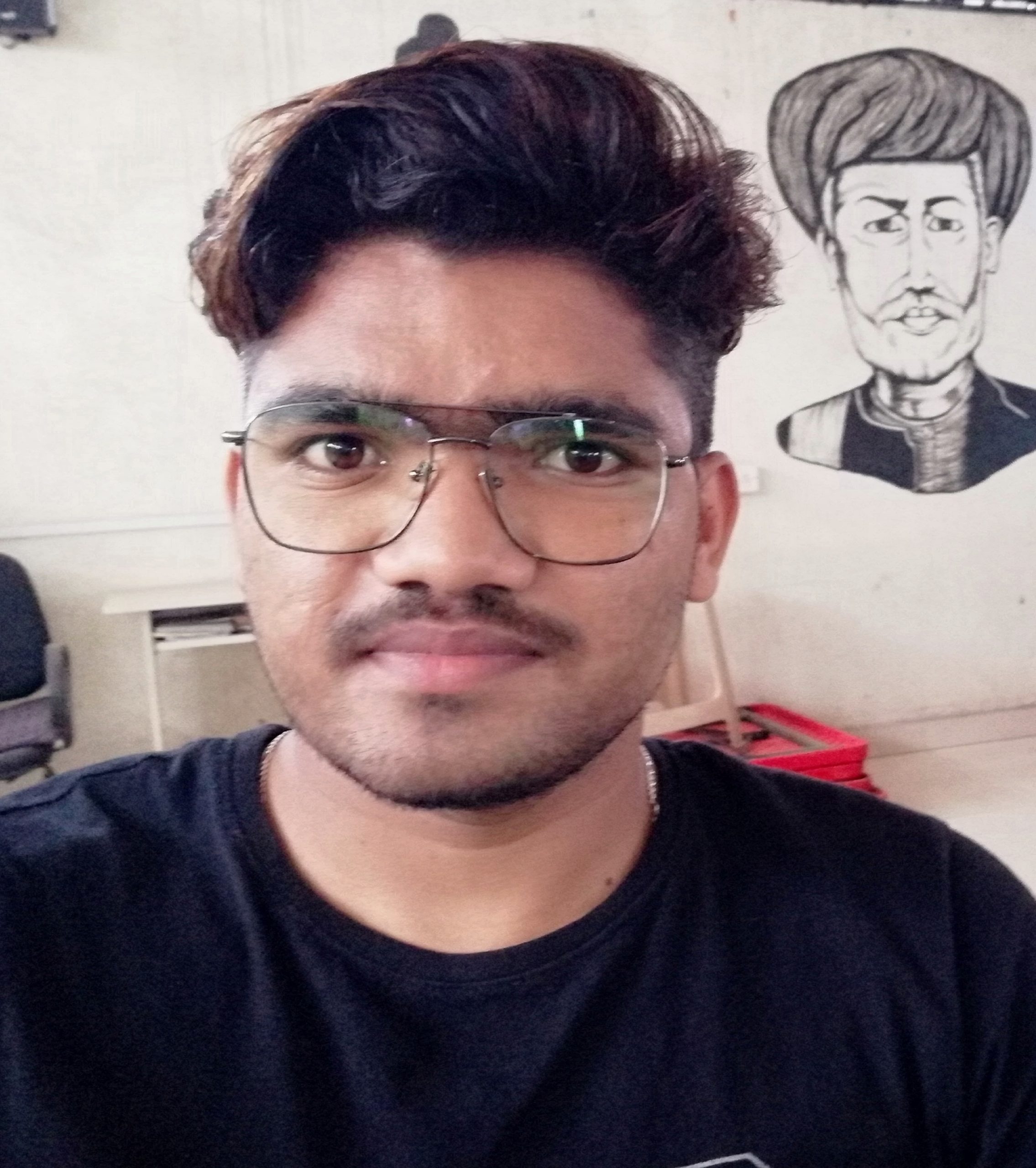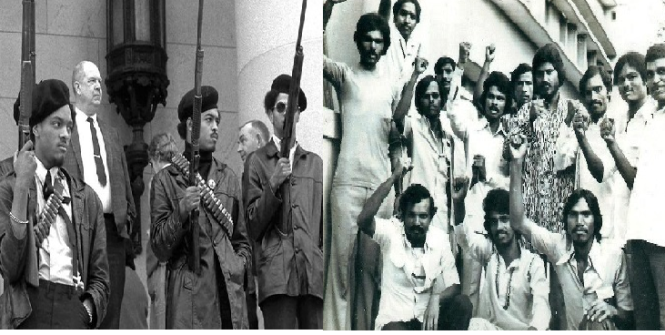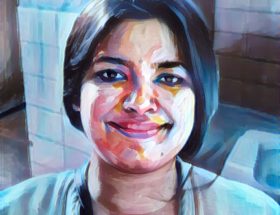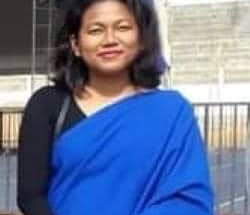Kundan Kamble

Introduction
This paper undertakes a comparative study between the Black Power Movement in America and the Dalit Movement in India. The study between these two movements will show the similarities and differences between race in the American context and caste in the Indian context. To bring forward these features I have analyzed one speech and an article for this study. The speech is by Bobby Seale (Chairman of Black Panther Party) and the article is by Raja Dhale (Dalit Panther).
Studies like this, using movement literature as a tool for comparison between two disparate movements in separate geo-socio-political contexts haven’t been extensively done. The Dalit Panthers were influenced by the Black Panther Party Movement as documented by J V Pawar, one of the founders of Dalit Panthers in India in his book Dalit Panther. Both communities (Dalit and Blacks) have long suffered oppression at the hand of dominant forces – the Whites in America and Upper castes in India respectively. Their struggle for equality and dignity has been very difficult.
Dr. Babasaheb Ambedkar, the Dalit leader in India fought very hard for the untouchables (Dalits). The similarity between the Black and Dalit population is referred to him in a letter to Dr. W. E. B. Du Bois where he writes, “I have been a student of the Negro problem and have read your writings throughout. There is so much similarity between the position of the Untouchables in India and of the position of the Negroes in America“. (Lankesh, G.2015)
However, Dalit literature has not risen to the stage where Black literature is. One of the reasons for this could be that Dalit literature is hardly written in English and is mostly written in native Indian languages, making it not widely accessible. Black literature has been studied in many parts of the world because it is available in English, whereas Dalit literature is confined to parts of India. Uplifting this literature and making it mainstream is crucial for the world to become aware of the existence and situation of the Dalit community, which suffered and continues to suffer like the Black community. A comparative study that unfolds the similarities and learnings from the Black movement and Dalit movement is a stepping stone in this direction.
Literature review
The Indian society has been divided along caste lines: originally conceptualized as a four tier (or Varnas) hierarchy with Brahmins at the top (priests and teachers), the Kshatriyas below them (warriors and rulers), the Vaishyas on the third rung (farmers, traders, and merchants), and the Sudras (servile class at the bottom). It envisaged a system of ‘graded inequality’, as Babasaheb observed, which accorded an “ascending scale of reverence” and “descending scale of contempt” for the Varnas. Below all these, lie the Atisudra – the untouchables (Dalits).
The Blacks in America suffered racism and discrimination on the basis of color. The people of dark color of America were denied rights by white people, the dominant ones. They had no right to get an education, no right to have decent homes and jobs, and no right to vote. They were slaves under the rule of white people. Survival of Black people on the white land was tough. They had to fight for their rights, which led to the abolition of slavery (1865) and the civil rights movement (1954 to 1968).
The 1960s and 70s was the time of strong resistance, the Blacks started resistance movements against racial discrimination after the Civil Rights Movement. In the 1960s The Black Power Movement emerged to guarantee safety and self-sufficiency in African American neighborhoods for Black people. There also saw a very strong movement, the Black Panther Party.
The founders of the Black Panther Party were college students, Bobby Seale and Huey P. Newton. They established this party on 15th October 1966 in Oakland, California, USA. They were influenced by the ideology of Mao Tse Tung, Lenin, Frantz Fanon, and Malcolm X. This party was for self-defense. Huey Newton stated that “The Black Panther Party is a Marxist-Leninist party as we follow their dialectical methods with practice (Newton, H. P. (2002) page 164)”. The party was originally formed after the assassination of Malcolm X in 1965. In order to expand the political activity of the party, the Black Panthers started questioning the ‘pigs’ (police) to ensure respect for their civil rights. The Panthers professed: “We are advocates of the abolition of war which can only be abolished through war and in order to get rid of the gun, it is necessary to pick up the gun”.
The name Black Panther Party was taken from the emblem used by the Lowndes County Freedom organization in Alabama. The panthers believed in the principle of “Tit For Tat”. Once Eldridge Cleaver, a Black Panther stated, “The Black Panther Party is going to defend the Black community. It is a Black organization, controlled by Black people, with nobody telling us what to do. We are going to stay out of order until we get a new order”.
Black Panther Party had a ten-point program in which they demanded freedom, full employment, Education, Housing, end of capitalism, end to police brutality, justice, and peace for the Black community. The Party started programs like medical camps for black people and free breakfast for children. They also started liberation schools where they taught Black history, Writing skills, and Political science to children.
In India, a similar kind of organization, called Dalit Panthers, was founded on 29 May 1972. It was influenced by the Black Panther movement in America. J.V Pawar, a co-founder of the Dalit Panthers noted in his book about the movement that “it was a short-lived movement, just like the Black Panther in the United States…(Pavāra, J. V. (2019))”. The book, Dalit Panthers was originally written in the Marathi, but on Angela Davis’ (a Black Panther) demand, it was translated into English.
The motive of the Dalit Panthers movement was standing up against the atrocities committed on Dalits in India. Even after the independence of India, atrocities on Dalits were rampant and common. Therefore J.V. Pawar and Namdeo Dhasal came forward and took the initiative to build a militant organization. Pawar states: “We thus founded the Dalit Panther. That was our way of venting our anger simmering within us”. Raja Dhale, who was co-founder of Dalit Panther, gained fame after writing an article in Sadhana magazine about the status of Dalits after the independence of India.
On 30 January 1970, the report of the Elayaperumal Committee was published. It disclosed that around 11,000 cases of atrocities were committed across India on Dalits, with the murder of 1,117 Dalits in a year. There were instances of Dalit women being raped, stripped, and paraded naked. Dalit men and women were assaulted for using public water sources, whipped for wearing decent clothes, beaten up for wearing slippers. Laborers were intimidated and human excreta was thrown into water sources that were used by Dalits. The report showed the utter failure of Indira Gandhi’s government to give justice to Dalits. Pawar says “Mainly the atrocities were done by Congressmen, Brahmins and some non-Brahmins” (Pavāra, J. V. (2019)Page 13). The report which was published by the Elayaperumal Committee was similar to the report, which revealed atrocities being committed against African Americans, published in the United States.
Growth in the Dalit Panther Movement could be seen after the powerful article written by Raja Dhale. Subsequently, many gatherings took place and young folks attended with enthusiasm. In a short span of time, the Dalit Panther movement was at its peak. Many branches of it were opened in various parts of Mumbai and other regions of Maharashtra, such as Marathwada and Vidarbha. The Panthers organized many successful rallies in Mumbai including the first rally which was against Dadasaheb Rupvate, a cabinet minister of state for social welfare (the portfolio which is unofficially reserved for Dalit leaders). He was defending the government, as atrocities on Dalits were on the rise. It was the first rally of Dalit Panthers, and they were arrested for the first time, on 18 September 1972.
Politics had a very strong effect on the Dalit Panthers, and many of its members got divided and started supporting different political parties for their campaigns. J.V. Pawar always wanted Panthers to be united to sustain the Dalit Panthers, but a brush with politics destroyed everything and therefore J.V. Pawar took the decision to dissolve the organization. He prepared the booklet to be distributed among news reports. Dhale, Umakant Randhir, and Pawar himself wrote the booklet and delivered it through Athawale, and officially Dalit Panthers were dissolved on 7 March 1977.
Chosen texts for analysis
I am going to do a qualitative study of one text each from both movements. From Black literature, I’ve chosen a speech by Bobby Seale, which was delivered at the Kaleidoscope Theater, Los Angeles, California, on 16 April 1968. And from Dalit movement literature, I’ve chosen the article by Raja Dhale, named “Kala Swatantradin” (Black independence day), which was published in Marathi magazine Sadhana on 15 August 1972. My focus of study will be the analysis of tone and language in the chosen literature.
Both texts are monologues, which are from one person’s perspective and have similar characteristics, where aggression, brutalities, and calls for unity can be found. The speech of Bobby Seale addresses the brutality of policemen, the arrest of Huey P. Newton, and the murder of a Black Panther Party member, Bobby Hutton. Hutton was the first person to join the Black Panther Party. He was shot by white policemen on 6 April 1968, just after the assassination of Martin Luther King Jr.
The speech is delivered in the context of demanding several necessary things for Black people and rebelling against inhuman acts and brutalities of the police. It also provides examples of white people’s domination over colored people outside America. Seale says that people in Vietnam, Africa, South America, Asia, and the Caribbeans are also being oppressed by the white people. Seale also shows how the power structure works in America, and how power can be gained through money and politics. Seale emphasizes that when it comes to fighting for freedom and against brutalities there is no right or wrong.
The article by Raja Dhale is from the perspective of young Dalit activists in India. It primarily focuses on caste atrocities committed on Dalits in Indian society. It also defines the workings of the Varna system in India, how it holds power, and the inhumane activities that sustain it. The actions taken by young Dalit activists are also clearly depicted in the article. Dhale highlights the difficulties they faced while rebelling against a biased government. Dhale’s article has themes of aggression, unity, and activism. It is also demonstrative of the rebellious nature of young Ambedkarites (followers and proponents of B.R Ambedkar’s teachings) as it addresses the oppressor directly with no hesitation.
Both the chosen texts are aggressive in nature, and emphasize getting justice and claiming things that are rightfully theirs. Throughout these texts, these ideas are made crystal clear for readers and listeners. Which really motivates one to fight against injustice and the dominative structure of brutalities.
Findings
- The tone of the speech and article
A tone of condemnation is employed in both texts. aggression is clearly depicted, by the words which are used by the speakers. Raja Dhale’s article begins by mentioning the ongoing agitation of students on the streets of Mumbai, where they had chosen to observe India’s Independence Day as a black day. This choice was made in light of the continuous atrocities on the Dalit communities. Mentioning this ongoing activity by young Dalit activists stokes further agitation. Their approaches becomes very rebellious in nature, where they burn the Holy books of Hindus. They also build youth organizations to stop oppression on Dalits. In the first part of his article Dhale amply demonstrates the power and assertion of Dalit youth in the emerging Ambdekarite movement.
The second half of the article deals with calling out the oppressors directly, which includes giving examples of the people who intentionally do not desire to free the Dalit or oppressed castes or groups in the Indian society. He brought an incident to the notice of an upper-caste activist who says “a woman of of a house of pleasure should get respect in society because she is fulfilling a need.. Why does Bhagwat bai says this, don’t you want to end this. Whoever thinks, in the same way, should begin their own prostitution business.” His tone of directly addressing the oppressor motivates young Dalit activists when we read it in Marathi. The writer not only speaks from the point of view of an individual but also tries to speak from different perspectives by conveying his stance against power structures and hammering in the very core cause of Dalits’ sufferings after 25 years of independence of India. This article was originally written in Marathi, therefore the cruciality of this article could be more understood by the young Dalit students who spoke Marathi. The intention and tone of the article would be thoroughly understood when we read it in Marathi. The aggressiveness and directly questioning nature of the writer would also be visible to the readers.
Moving on to the second text, which is the speech of Bobby Seale, it addresses the police brutalities in a very soft tone if we look at the words and his speaking style. His approach is to motivate people to rebel against their oppression. This approach is slightly different from Dhale’s because he does not address the oppressor directly and instead opts to tell a story at the beginning of his speech. Where Dhale gives more stress on questioning the oppressor, Seale emphasizes getting a good life in American society. Seale focuses on demanding rights and things that his community must rightfully have. The speech places a strong emphasis on unity, which would help overcome the brutalities on Black people. Seale says that they have “the ability to define the situation and we have been defining it, now we must organize our black communities to also make the power structure of racism act in the desired manner”.
- Use of Language
Both speakers convey their message and thoughts in simple language, which seems apt for mass appeal. But on closer reading, it appears that the use of language is different in both texts. Firstly, the article by Raja Dhale is very appropriate for the people from rural Maharashtra. The Marathi which he employs to describe the pain of a Dalit activist appears to be rural Marathi. This allows an ordinary Marathi person to keenly understand the article and the ideas conveyed through it. The words which he uses might look inappropriate to the orthodox Marathi speaker. But these words are commonly used in the rural areas of Maharashtra. There is his statement in the article which shows his disappointment towards atrocities in strong words. He says, “The bastards impose a fine of Rs. 300 if the national anthem is disrespected. The wretched national flag is but a piece of cloth. It is just a symbol in specific colors. Punishment for merely disrespecting a symbol, but when in Sonnagaon, a living woman was disrobed then the fine is a mere Rs. 50. Are we going to shove the ‘insult’ to such a flag, along with the flag itself, up somebody’s ass? A nation is made up of people. Is the suffering of the people more important, or an insult to a symbol? What is more significant?”
Reading these lines in Marathi will motivate young Dalit students/activists to really think about their existence in a discriminatory society. He tries to unite the people by throwing up a question on their existence. This really strikes young folks like me. Hence, his Marathi appeared uncomplicated to me while reading. The structure and the freestyle language used are inspiring for Dalit writers who want to convey their feelings and learnings through their writings.
In the speech of Bobby Seale, the English which he uses is a common language in American society. Seale has used the metaphorical approach to describe his feelings and the reality of white society. He starts his speech by describing a spring, which is a source of clean water. But because of the pigs in the spring, the water is getting dirty. There is a man in the story who is thirsty and seeks clean water to drink, but because of the pigs, he could not get clean water. This metaphoric approach of Bobby depicts his style of explaining the reality to the audience to understand the scenario thoroughly. It connects the lives of the Black people to the thirsty man and, compares white policemen with pigs. This approach gives the audience a broader understanding of their sufferings. Also, the descriptive style discloses the motto of the Black Panther Party, and how this party will work for the betterment of the Black people in the USA.
Conclusion
Both the movements have been seen as very resistive, following a tit for tat approach. Fighting against the whole system is not simple and it was not easy for both the movements. They had to stick to certain limitations, and they could not take the violative approach which meant breaking laws. But to some extent, they had to do what they must do, such as Black Panthers carried guns in self-defense against the white police. But the Dalit Panthers were not the same, they followed the peaceful path, despite in some cases when they had to go against the law and take matters into their own hands to ensure justice for Dalit victims. Their peaceful approach never allowed them to go for war, which might have taken many lives. However, gaining political power was the crucial part of the movement, but they were trapped by ruling forces in various ways, and the arrest of the Panthers weakened the movement.
Further study will open the doors to understanding both movements in depth. The historical suffering of both communities has been similar in nature. The literature which emerged from both the movements is explicit and strong. However, doing more studies will give us more clear ideas on the current scenario and in measuring the progress which they have made.
~
References
काळा स्वातंत्र्यदिन! (2019, July 19). Kolaj. Retrieved January 29, 2022, from https://kolaj.in/published_article.php?v=The-Article-in-Raja-Dhale%E2%80%99s-Sadhana-Weekly-%C2%A0RI9536702
Bobby Seale | Speech delivered at the Kaleidoscope Theater. (n.d.). APM Reports. Retrieved January 29, 2022, from http://americanradioworks.publicradio.org/features/blackspeech/bseale.html
https://www.roundtableindia.co.in/black-independence-day/. (n.d.).
Kumar, U. (2017, October 30). Manifesto of Dalit Panthers. Velivada. Retrieved January 29, 2022, from https://velivada.com/2017/10/30/manifesto-dalit-panthers/
Kumar, U. (2020, July 13). The Dalit Panthers and the Black Panthers – Brief historical backgrounds of two revolutionary movements. Velivada. Retrieved January 29, 2022, from https://velivada.com/2020/07/13/the-dalit-panthers-and-the-black-panthers-brief-historical-backgrounds-of-two-revolutionary-movements/
Pavāra, J. V. (2019). Dalit Panthers (R. Sonawane, Trans.). Forward Press
Lankesh, G. (2015, July 14). Dalits and African Americans: Struggles and solidarity. Bangalore Mirror. Retrieved February 27, 2022, from https://bangaloremirror.indiatimes.com/opinion/views/dalits/articleshow/48060264.cms
Newton, H. P. (2002). The Huey P. Newton Reader (D. Hilliard, D. Weise, & H. P. Newton, Eds.). Seven Stories Press.
~
Kundan Kamble is an alumnus of Nalanda Academy, Wardha, and is currently an Educator at Digital Nalanda. He was also an associate at Sanghmitra Business Incubator. He completed Bachelor’s in English (hons) from Central University Of Karnataka. He is keenly interested in studying Comparative Literature, especially Dalit and Black literature.










